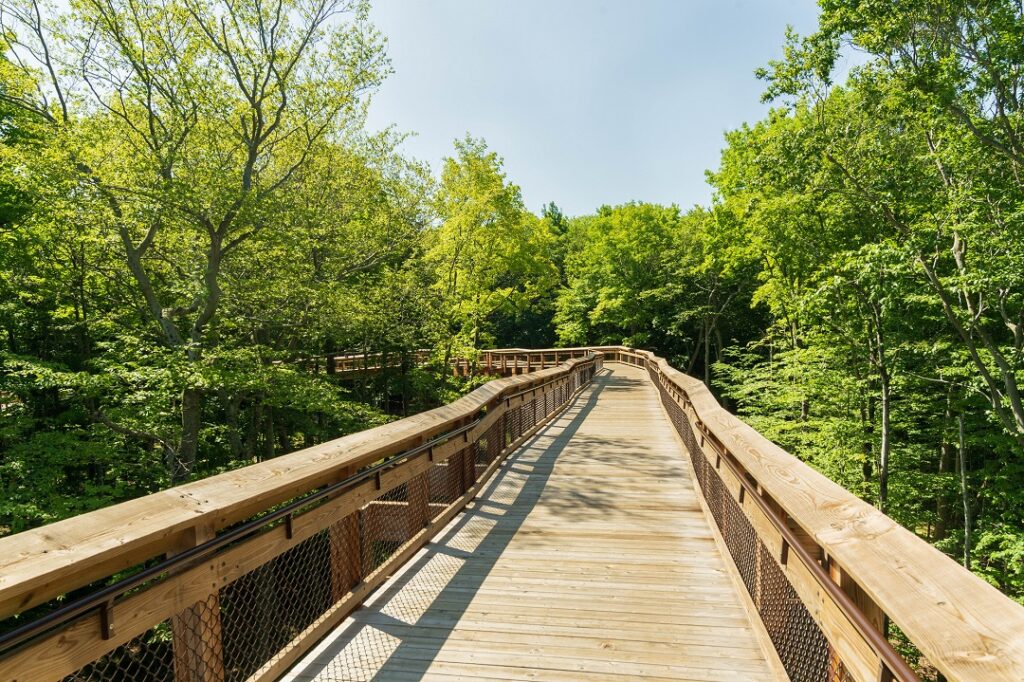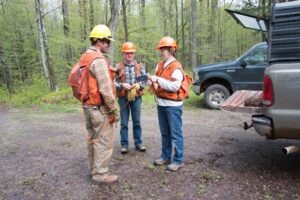 Dressers, beds, tables, chairs, pianos, guitars, boardwalks and birdhouses. What do they all have in common? They’re all forest products! These are just a few of the creations that are made from timber and they all are spectacular. all forest products! These are just a few of the creations that are made from timber and they all are spectacular.
Dressers, beds, tables, chairs, pianos, guitars, boardwalks and birdhouses. What do they all have in common? They’re all forest products! These are just a few of the creations that are made from timber and they all are spectacular. all forest products! These are just a few of the creations that are made from timber and they all are spectacular.
Forest Products News
The People Behind the Products

DNR Division of Forestry at work/ Credit: Rena Johnson/Courtesy of NASF
During Forest Products Week, we took time to reflect on all the wonderful things that come from forests and the great people who work in the forest products industry as well as our Division of Forestry staff.
Did You Know?

Did you know? Wood window and door manufacturing alone contributes $1.2 billion annually to Wisconsin’s economy.
A Day Without Forest Products
By Grace Hershberg, DNR Forestry Associate Communication Specialist
Last week Oct. 17-23 we celebrated Forest Products Week!
This week championed our forests and the products they create to enhance our everyday lives. What would your day look like without wood to build houses, furniture to sit on, paper to write on, tires on your car and even toothpaste to brush your teeth? All of these (and more than 5,000 others) have a connection to wood products!
Forest products make our lives a little easier while promoting sustainability.
Interested in learning more about forest products? Visit https://dnr.wisconsin.gov/topic/ForestBusinesses.

Forest Socioeconomics: An Introduction
By Grace Hershberg, DNR Forestry Associate Communication Specialist
Take a walk through a forest on a fall day and what do you see? Probably a lot of trees. Some may be vibrant, their leaves painted shades of orange, yellow and red while the conifers hold tight to their striking green needles. But amidst the beauty and tranquility it may not dawn upon forest users to consider the socioeconomic impacts of forests.
Wisconsin is home to almost 17 million acres of forest land, making it a hub for diversified forest markets and non-market benefits a like. From the lumber and paper industries that fall under the forest products sector, to the ecosystem services provided by forests such as carbon sequestration, forests play a crucial role in our lives through the goods and services they provide.
Casehardening Of Lumber: What It Is And How To Relieve It
By Scott Lyon, WI DNR Forest Products Specialist
Lumber manufactured into interior wood products (e.g., furniture, flooring, millwork, cabinets) typically requires kiln drying to reach a targeted moisture content to minimize dimensional changes. In Wisconsin, this dry-basis moisture content is 6-8%. Not only does kiln drying allow the wood to equalize to desirable and usable moisture content, it kills fungi and insects that might be present in the lumber.
However, drying stress—commonly called casehardening or tension set—occurs during the drying process. Casehardening is a normal part of the drying process of lumber. It is critically important to relieve this stress as it can lead to warping and twisting when lumber is later re-sawn or machined.
Continue reading “Casehardening Of Lumber: What It Is And How To Relieve It”
Merchandizing Urban Trees
By Scott Lyon and Alex Anderson, WI DNR Forest Products Specialists
An urban tree is most valuable while it’s living. However, if that tree is killed or damaged, there are ways to recycle it. As the “buy-local” movement continues to gain momentum, urban wood recycling efforts have increased in Wisconsin. Historically, urban trees were utilized by only a few mills in the state. With the increased number of trees killed by invasive insects and disease, though, municipalities and arborists are seeking alternative uses for urban wood materials, and interest has grown among traditional forest products manufacturers (sawmills, bolt and pallet mills, pulp mills, etc.) to procure this ever-growing resource.
Carbon In Wisconsin Forests
By Brian Anderson, WI DNR Forest Inventory Analyst and Dan Buckler, WI DNR Urban Forest Assessment Specialist
Wisconsin forests play a major role in accumulating carbon from the atmosphere, but not all forests sequester and store carbon in the same way over time. A new document identifies some of these differences and outlines key metrics of carbon in Wisconsin’s forests.
Pandemic Assistance for Timber Haulers Closing Soon
In July, the U.S. Dept. of Agriculture announced a Pandemic Assistance for Timber Harvesters and Haulers (PATHH) program to address losses due to COVID-19. The $200 million fund was opened on July 22 and closes on October 15 of this year and is being administered by the Farm Service Agency in conjunction with the U.S. Forest Service. Visit this link for more information.
Calendar of Events
Local-Use Dimension Lumber Grading Workshop
February 16, 2022
Rhinelander, WI (Location TBD)
Visit https://dnr.wisconsin.gov/topic/forestbusinesses/events to register
Local-Use Dimension Lumber Grading Workshop
April 20, 2022
Green Bay, WI (Location TBD)
Visit https://dnr.wisconsin.gov/topic/forestbusinesses/events to register
